Cats are funny creatures. Cats are always entertaining, from the way they play to the crazy places they sleep.
Running sideways is no exception to this rule. Their agile feet pitter-pattering side to side, inviting you to play. So, what is the deal with this sideways running anyway?
Running sideways is one of many peculiar things that cats do, and it has several possible meanings.
Typically, cats run sideways as an invitation for play, and you can engage them with a toy and some fun. However, sometimes, when a cat runs sideways, it can be a sign of defensive behavior.
Deciphering a cat’s wants and needs can feel impossible as they are incredibly elusive creatures.
Intentionally exploring their behaviors can maximize their enjoyment and help deepen your bond with your furry friend.
Your cat is constantly communicating with you, it just takes understanding their signs to hear what they are saying.
Your Cat’s Gait Traits
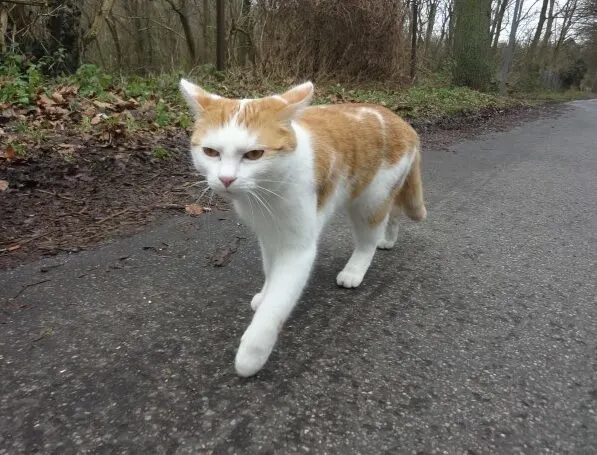 Your cat’s gait can say a lot of things about their emotions-playful, aggressive, overwhelmed, curious.
Your cat’s gait can say a lot of things about their emotions-playful, aggressive, overwhelmed, curious.
Not all cats are especially active, particularly when they start advancing in age. A kitten’s behavior will look vastly different from an adult’s. So it is important to interpret their actions through their age.
Why Do Cats Run Sideways?
Running sideways encompasses several different movements-hopping, running, and quick steps. All of these movements are active signs of play engagement and sometimes a signal to back off.
Most of the time, you will find this gait pattern is just an invitation to play. A sparkly string, a crinkly toy, or even a dose of catnip can help engage play in your cat.
Pouncing at a toy will then lead to a quick lateral retreat, mirroring hunting in their wild counterparts.
This kind of active play is a great way to keep your cat exercised and healthy. The give and take of this play are beneficial for their reflexes and help release energy in a productive way.
Why Do Cats Jump Sideways?
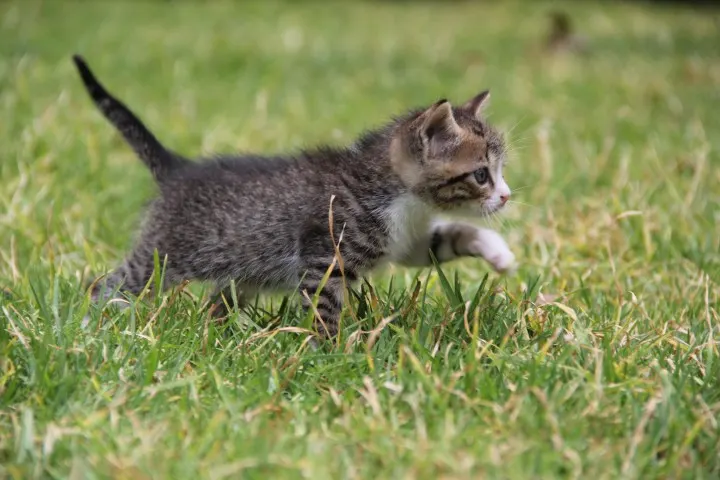 Have you ever slammed a door around a cat? Chances are you’ve seen their tell-tale side hop. Cats notoriously hate surprises, and jump scares are no exception.
Have you ever slammed a door around a cat? Chances are you’ve seen their tell-tale side hop. Cats notoriously hate surprises, and jump scares are no exception.
When a cat jumps to the side, this is a reflex, like ducking or catching yourself when you fall. This is a fear reaction, and once they find the source of the noise, likely, they’ll simply move on.
Arching and Walking Sideways
Cats are notably smaller creatures, and when confronted with a predator, they need to make themselves appear larger.
Arching their back makes them look larger and more fierce. By arching and sidestepping away, they are sending a message to any threats to stay away.
Causes Of High Energy In Cats
There are an unbelievable number of similarities between house cats and their wild feline friends. In nature, wild cats have to conserve energy for hunting and functioning in bouts of low and high energy.
Cats sleep the majority of the day, so when it comes to active play, episodes of high energy are typical.
Cat Zoomies
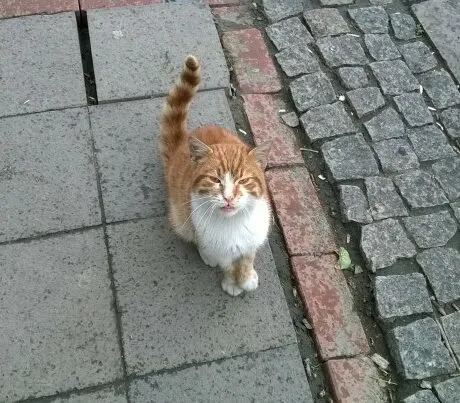 If you haven’t heard of the zoomies, this is one of the most fascinating of all pet behaviors. When cats have pent-up energy and aren’t able to release it, this will then result in zoomies.
If you haven’t heard of the zoomies, this is one of the most fascinating of all pet behaviors. When cats have pent-up energy and aren’t able to release it, this will then result in zoomies.
The zoomies are short periods with intense energy. This can manifest in running laps, climbing, and jumping from the furniture. You most often see the zoomies in younger cats, but it’s not uncommon for adults to be equally afflicted.
The best remedy for zoomies is to simply let your cat tire itself out. It’s not unusual for zoomies to exhibit bad behavior due to overstimulation, so it’s best to use a hands-off method.
Boredom
Boredom is one of the leading causes of high energy, especially with highly intelligent cats. When your cat is not adequately stimulated, they are likely to have higher energy.
Sometimes this can mean trouble, like clawing your furniture or tearing up your toilet paper roll.
Boredom is a relatively easy symptom to manage, and thankfully there are tons of ways to engage with your cat. You should first try to learn if your cat is food or play-motivated.
After you’ve identified their motivator, then you can use their preferred method to help combat boredom.
Hyperthyroidism
The thyroid controls hormones, and hormones control your cat’s energy levels. If their thyroid is producing too many hormones, this leads to excess energy.
If you suspect that your cat’s energy may be linked to a health problem, contact a veterinarian immediately.
The excess hormones can lead to kidney failure, blood pressure issues, bowel problems, and liver disease.
There are multiple ways to treat hyperthyroidism: diet, medication, surgery, and radioactive iodine treatment.
Hyperthyroidism is a very dangerous disease if gone untreated. Unfortunately, cats that are only treated with medication and diet typically live to around 3-5 years old.
Surgery to remove one or both of your cat’s infected thyroid glands can be a cure, but there are caveats. If the infected gland is removed, then your cat is cured.
But, if the other must be removed, then hormone supplementation is needed for life.
The most successful way to cure hyperthyroidism in cats is radioactive iodine treatment which has a 96% success rate.
Radioactive iodine is injected into your cat’s thyroid, which then makes the affected tissue of the thyroid dormant. While not the most budget-friendly option, this is the most likely to save your pets life.
Managing Your Cat’s Energy
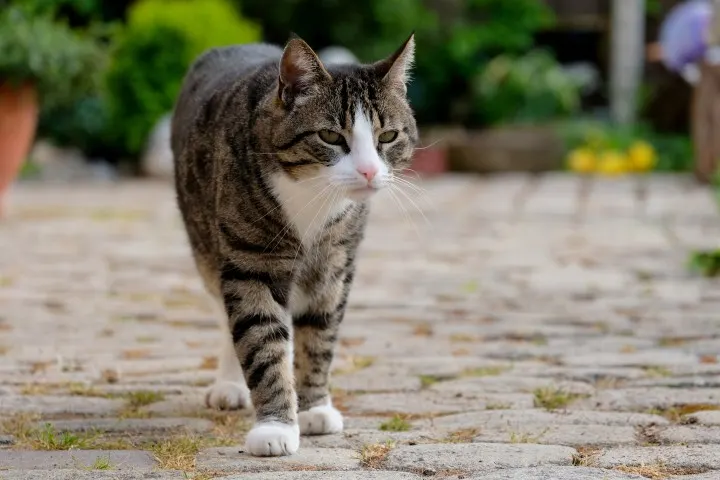 Temperament and age play a huge role in your cat’s activity level. For some, ten minutes of play will suffice, but for others, it may take an hour to tire them out.
Temperament and age play a huge role in your cat’s activity level. For some, ten minutes of play will suffice, but for others, it may take an hour to tire them out.
Your cat should be participating in some amount of stimulating activity every day, physically or mentally.
Not all cats are able to participate in exercise; disease, age, or physical deformity can prevent them from activities. Other cats may not be motivated to play simply due to their temperament.
Regardless, there are lots of ways to help exercise your cat, whether in the mind or in the body.
The Laser Pointer
The infamous laser pointer – both a friend and an enemy. Nothing drives a cat crazier than that tiny red dot. Lasers can be a great way to get your cat moving without risking accidental clawing.
The Nature Perch
If your cat enjoys passive play, integrating visually stimulating opportunities is a great way to exercise their brain.
Putting a cat tower by the window or purchasing an aquarium lets your cat enjoy nature while stimulating their minds.
Catnip
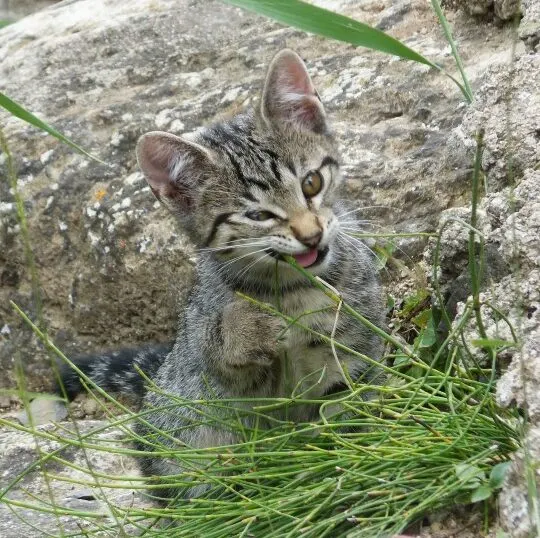 Catnip is an herb that can affect your cat’s brain, but only 50% of cats actually respond to it. Sniffing catnip causes high energy, and eating it tends to cause mellow behavior.
Catnip is an herb that can affect your cat’s brain, but only 50% of cats actually respond to it. Sniffing catnip causes high energy, and eating it tends to cause mellow behavior.
If you have a low-energy cat that you want to exercise, catnip is a great option to increase their play.
Puzzle Toys
Not all cats are play-driven, and for those that aren’t, treats may be a better motivator. If you are watching your cat’s weight, using their food as treats can work just as well.
A puzzle toy slowly dispenses treats as they play with it. This allows your cat to engage in active play while also enjoying their favorite treats.
These are an affordable way to keep your cat stimulated and active.
Cat Towers
Whether it’s tall, small, or anything in between, cats love to crawl on it. Cat towers are a great source of play for them, allowing them to climb, hide, and jump.
There are many different styles of cat towers, from a basic perch to a jungle gym of cat fun.
Cats do well with variations, which is why the cat tower is such a great investment. What they liked doing yesterday may be totally different today, so diversity on the tower is best.
Tall perches are likely the most popular feature when it comes to cat towers. Cats love to sit and survey their little microworld, just to know that they are still in control.
Small boxes and holes for them to get in and out of are another fan favorite, allowing them time alone.
Related Questions
When do cats grow out of their kitten stage?
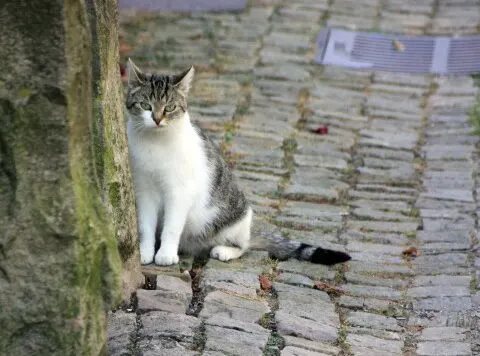 Physically, cats can reach their adult size as soon as 12 months old. Reaching full maturity as an adult cat typically takes a full 3 years, but this can vary depending on the breed.
Physically, cats can reach their adult size as soon as 12 months old. Reaching full maturity as an adult cat typically takes a full 3 years, but this can vary depending on the breed.
It is not uncommon for cats to display kitten-like behaviors past three years, but this is usually when they stop.
Are some cat breeds more energetic than others?
Yes, cat breeds have a lot to do with their energy level. Some of the most high-energy cats are Maine Coon, Bengal, Siamese, and many more.
It is important that when considering purchasing a cat, that you understand exactly what you are getting.
What are some low-energy cat breeds?
When it comes to purebred cats, Ragdoll, Russian Blue, and Persian tend to be on the lower energy side. It becomes harder to identify energy levels when there are mixed breeds and unknown family history.
Stacy is a lifelong animal lover who truly believes life just isn’t complete without pets. She’s had pets her whole life (including three dogs and a cat living under the same roof, somewhat harmoniously). She currently resides in NOLA with her husband, son, and two pups, Scooby “Dooby” Doo and Zoey. Stacy always makes a point to learn everything she can about her fur babies, and she has been writing about the pet-parent life for over two years.

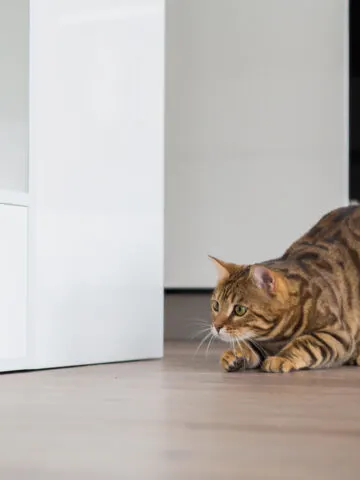

Leave a comment
You must be logged in to post a comment.